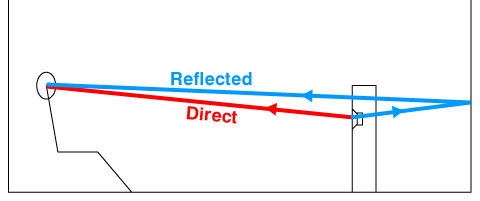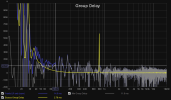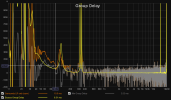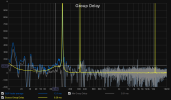I know its not often that your sub will play the same frequency response as your mains, but I get good results from overlapping lower frequencies according to where nulls are. Recently, I gave the flanking subs technique a try which on paper is meant to help with SBIR by using a similar concept of multiple subs but at a higher frecuency range.
I added a flanking subs to my mains which roll off like a closed boxed and the flanking subs with a low pass around 170hz, so both the mains and the flanking sub play around that 170hz but the sub which was next to the wall added SBIR between 70 and 80 hz which wasn't in my original measurements with my main speakers.
Irrespective of the SBIR, I am curious if the mains were playing 70 to 80 hz as per normal prior to adding the sub and the flanking sub introduced a major null highly likey related to the sub being not close enough to the wall and the measurement displays the null, are we hearing a null or the mains 70 to 80hz?
Essentially, is the null from the newly added sub woofer cancelling the flat reponse from the main speakers?
I added a flanking subs to my mains which roll off like a closed boxed and the flanking subs with a low pass around 170hz, so both the mains and the flanking sub play around that 170hz but the sub which was next to the wall added SBIR between 70 and 80 hz which wasn't in my original measurements with my main speakers.
Irrespective of the SBIR, I am curious if the mains were playing 70 to 80 hz as per normal prior to adding the sub and the flanking sub introduced a major null highly likey related to the sub being not close enough to the wall and the measurement displays the null, are we hearing a null or the mains 70 to 80hz?
Essentially, is the null from the newly added sub woofer cancelling the flat reponse from the main speakers?








